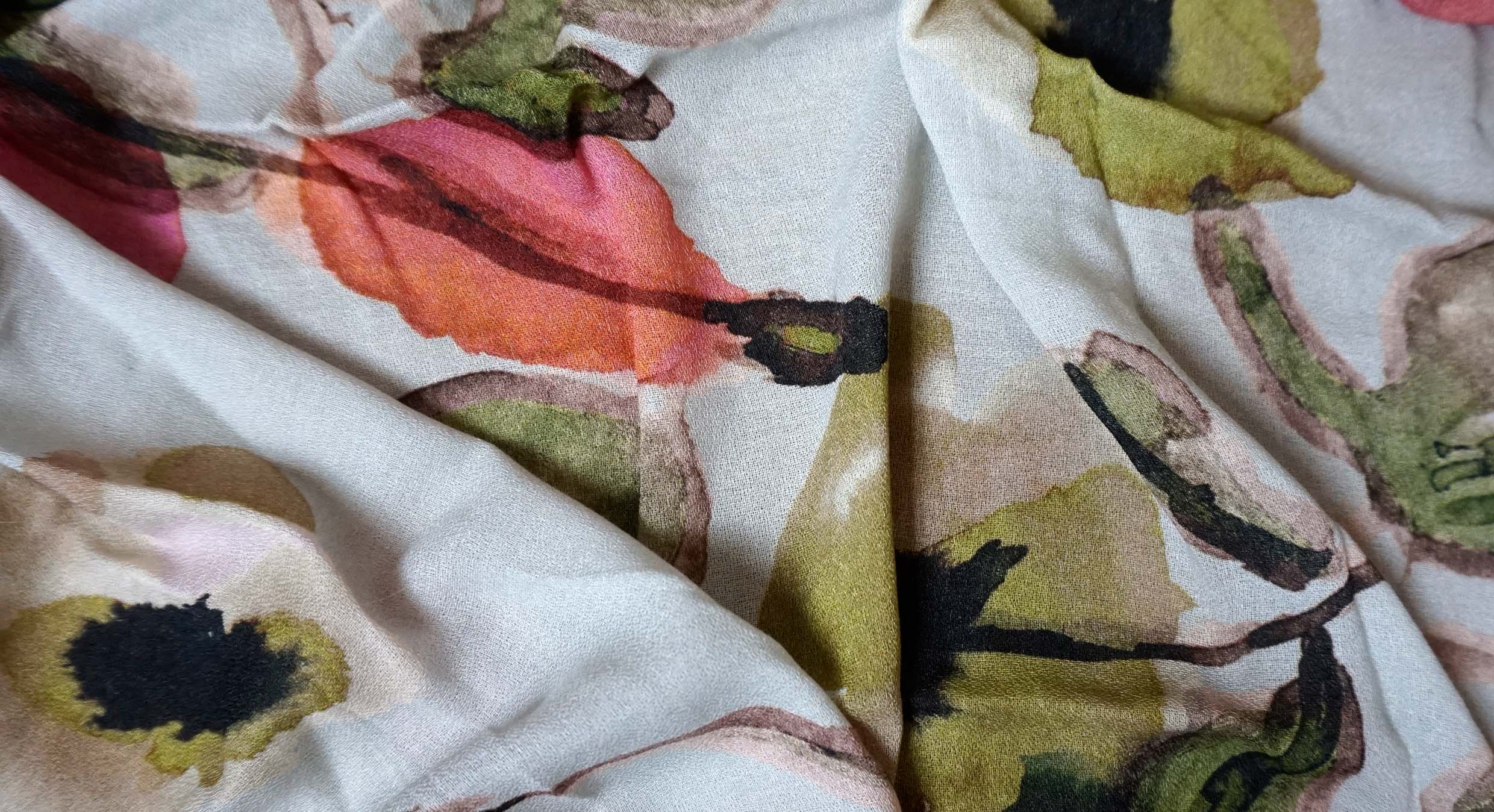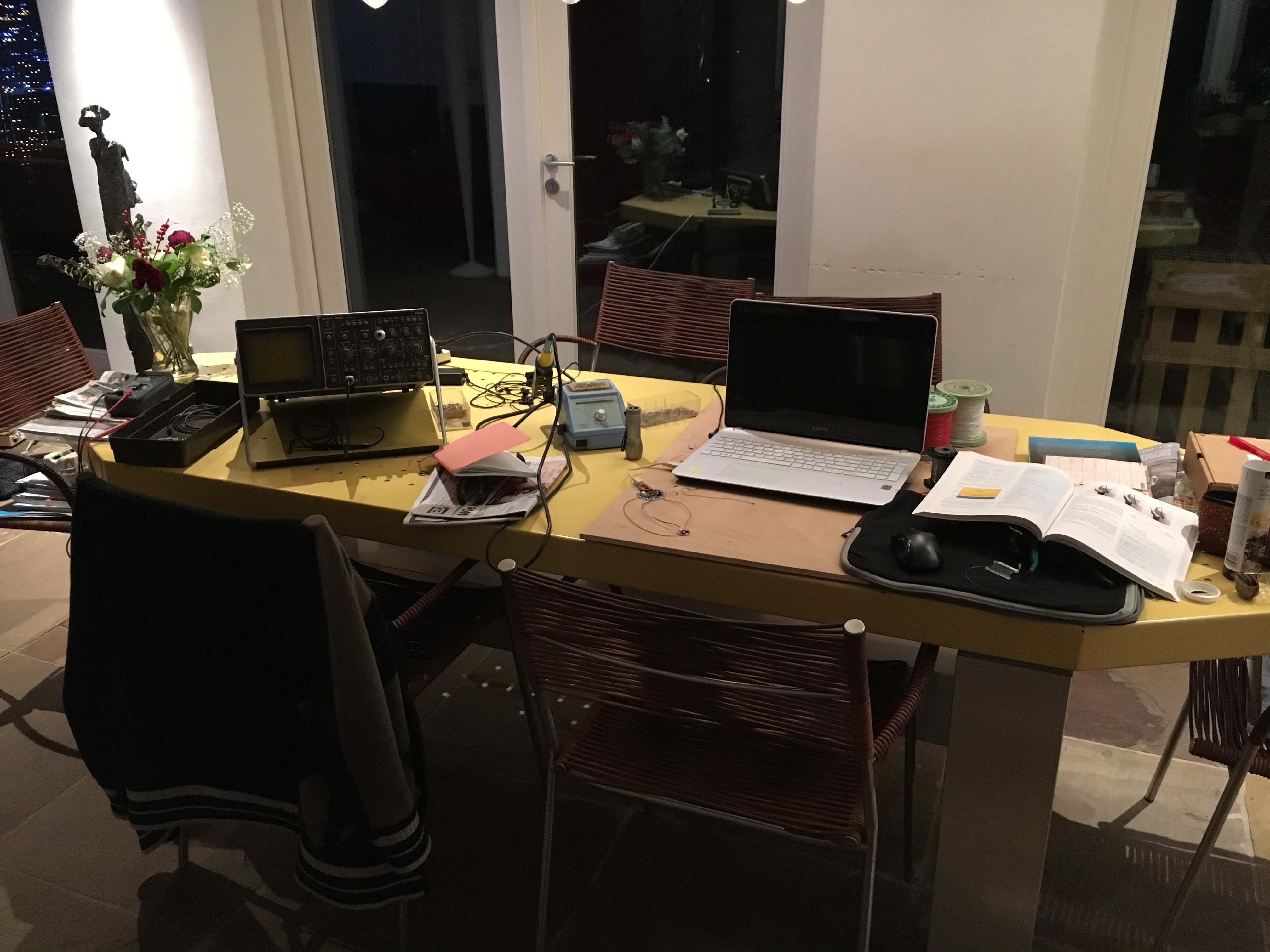The materials that were tested in the last two weeks are cotton, wool, hemp, linen, silk, denim, viscose, polyester, nylon, polyurethane/polyester mix and cotton/viscose mix.
They were tested indoors at a room temperature of 20 degrees Celcius and outside at a temperature of 0 degrees Celcius. The set-up was changed a little bit to get the best results and is as follows:
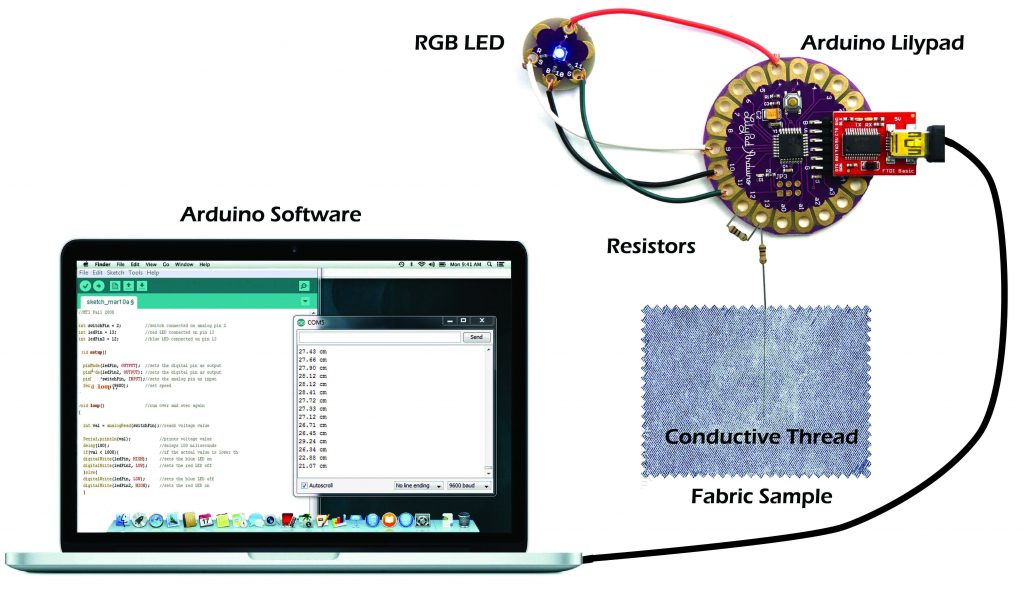
After these two weeks of material study I can conclude that many natural fibers seem to work well when mixed with a conductive fiber. The graphs don’t show a lot of noise, except for wool. Most of the synthetic fibers show a larger amount of noise, only polyester shows promising results. Though, it sometimes did have some errors while testing. Another interesting outcome is that mixed materials have bad results and show a lot of noise. My guess is that a good results depends on the type of structure of the fabric and the material properties of the insulating fabric, especially the way it forms a fiber or a yarn.
Most promising insulating materials are silk, denim and viscose in combination with stainless steel.
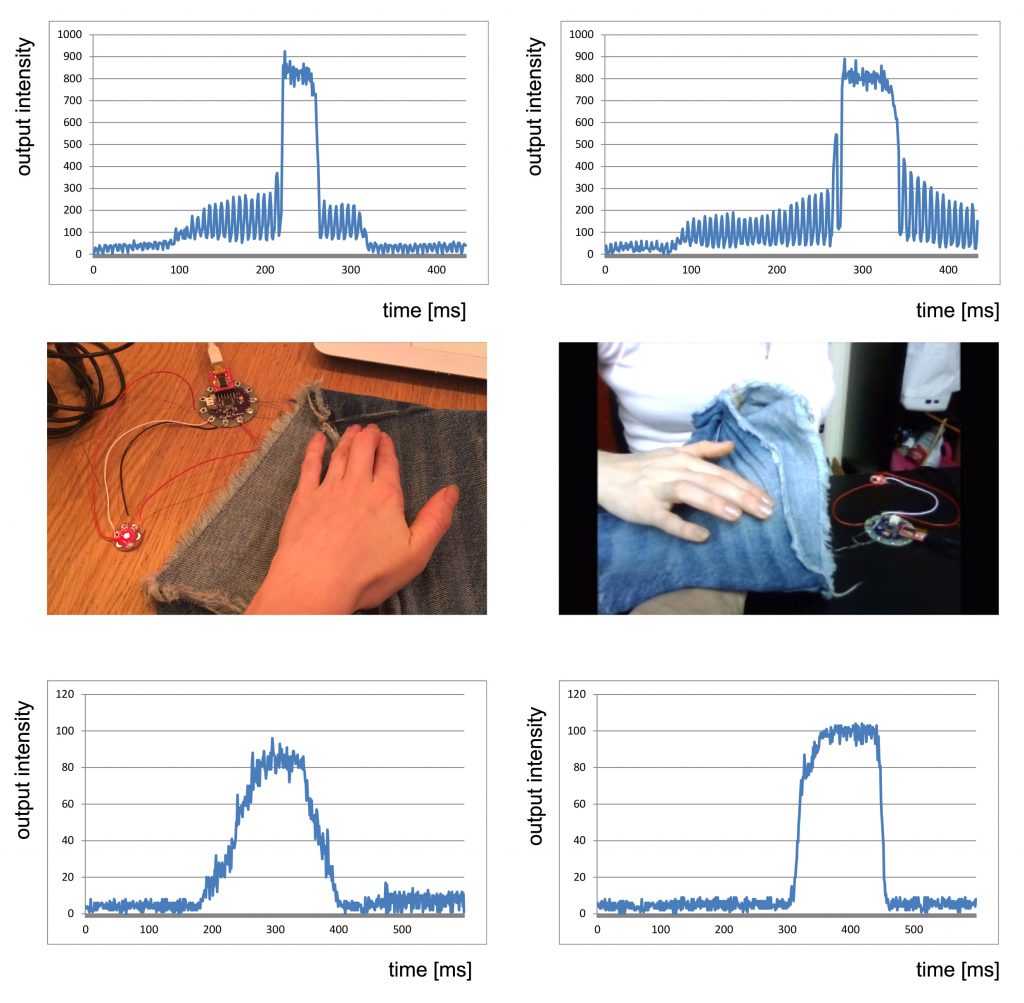
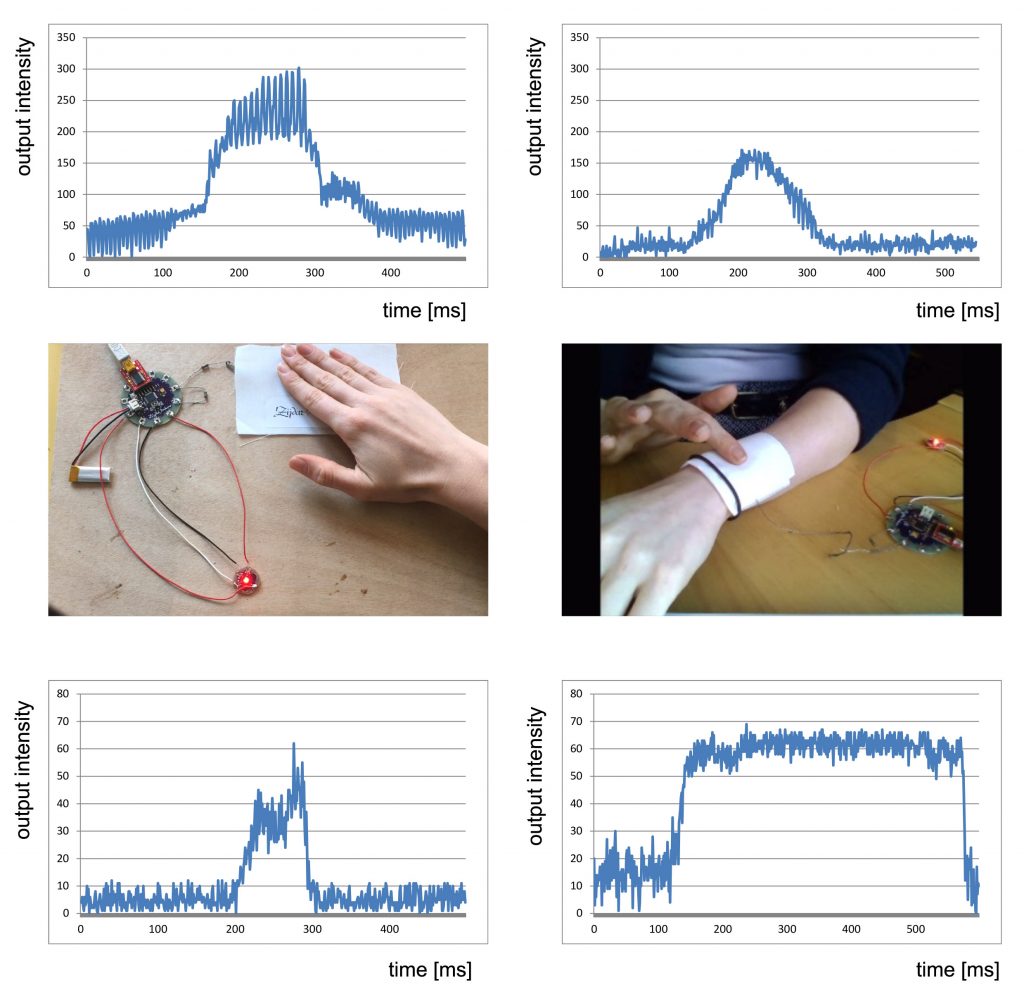
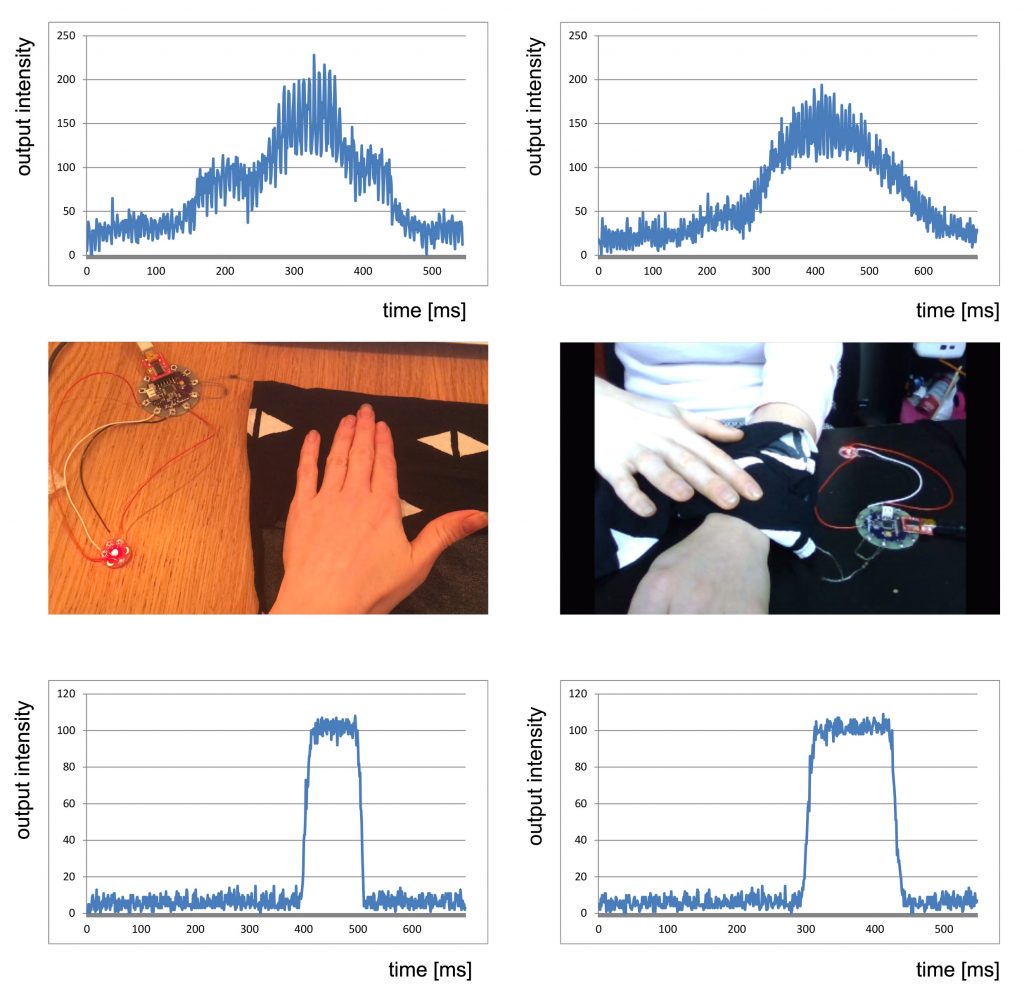
These three materials will be further investigated in the user test, which concludes the first phase of the project.


